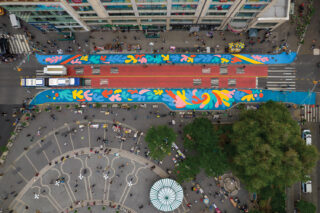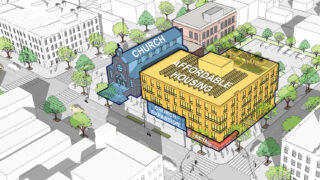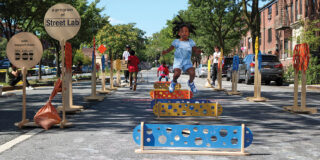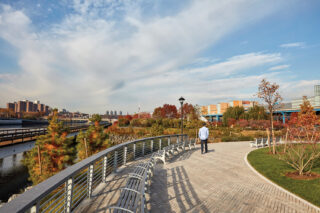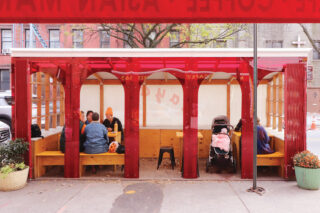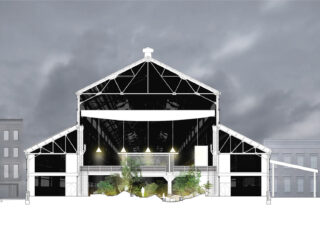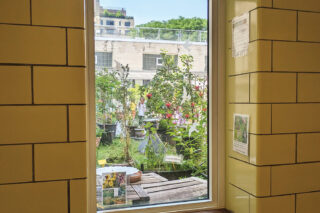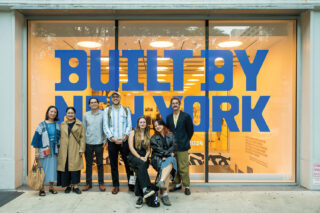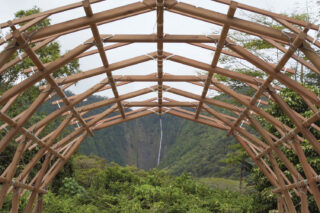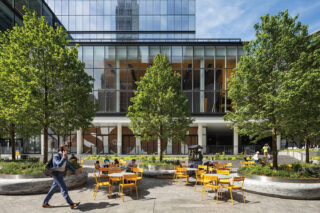
As we near the end of our 20th anniversary year, I find myself reflecting on a unique and special run of exhibitions at the Center for Architecture that forecast the direction in which we hope to collectively move as an institution.
This year, the Center has hosted a lineup of exhibitions that continues to push the boundaries of architectural discourse and civic engagement. The 2024 calendar has not only explored a wide range of themes, but has also attracted new and diverse audiences to the Center, underscoring its role as a critical hub for dialogue on design, urbanism, and social justice.
One of the standout exhibitions this year was “Constructing Hope: Ukraine,” on view from May through September. This moving and timely exhibition emphasized how architecture can play a pivotal role not only in the reconstruction of buildings, but also in healing a nation and fostering a sense of community. The show captured the attention of the public and critics alike, most notably earning a review in The New York Times. In its June 2024 feature, the Times praised the exhibition for its sensitive yet powerful portrayal of the resilience and rebuilding efforts underway in Ukraine amid the devastation caused by the war.
Another groundbreaking exhibition this year, “Spatializing Reproductive Justice,” expanded the Center’s engagement with pressing sociopolitical issues, their intersection with design, and the role of the architect in addressing them. This show delved into the spatial dynamics of reproductive healthcare, examining how access to facilities and services is shaped by urban environments, zoning laws, and public infrastructure. Through architectural models, interactive installations, and real-world case studies, the exhibit sparked conversations about the built environment as an agent in enabling or hindering access to reproductive care. This exhibition was particularly noteworthy in the extent to which it reached new audiences, including activists, healthcare professionals, and community organizers, many of whom may not typically visit architectural exhibitions.
As we look to the fall, the Center’s recently opened exhibition, “Built by New York,” promises to be a celebration of the city’s architectural achievements over the past two decades. Showcasing the work of AIA members from all five borough chapters (a first for the Center), “Built by New York” highlights projects that have shaped the city’s skyline and its communities, including affordable housing, iconic public spaces, and the built environment at large. It offers a unique opportunity to reflect on how architecture has evolved in New York since the Center’s inception in 2003. Together, these exhibitions provide an important glimpse into the evolving role of the Center for Architecture in the city. On the one hand, we have the opportunity to engage audiences on subjects that matter to them but aren’t traditionally architecture-related, inviting them to encounter our particular lens and design-centered point of view. On the other, we will always show the public the best of what our members and communities are building, and how those projects are improving lives and creating a more beautiful and vibrant city. Our 2024 exhibitions have been a testament to the power of design and to the Center’s commitment to fostering meaningful experiences and dialogue that reach a broad spectrum of visitors.








